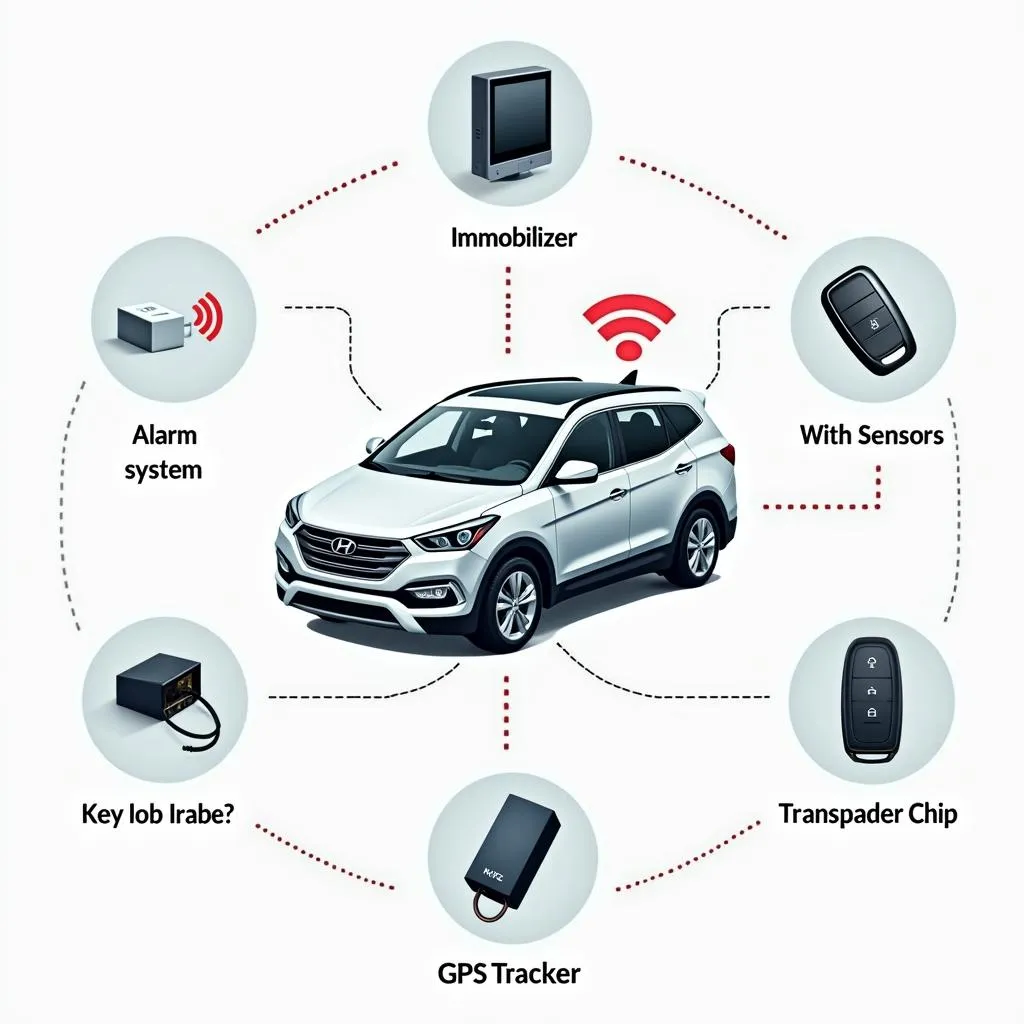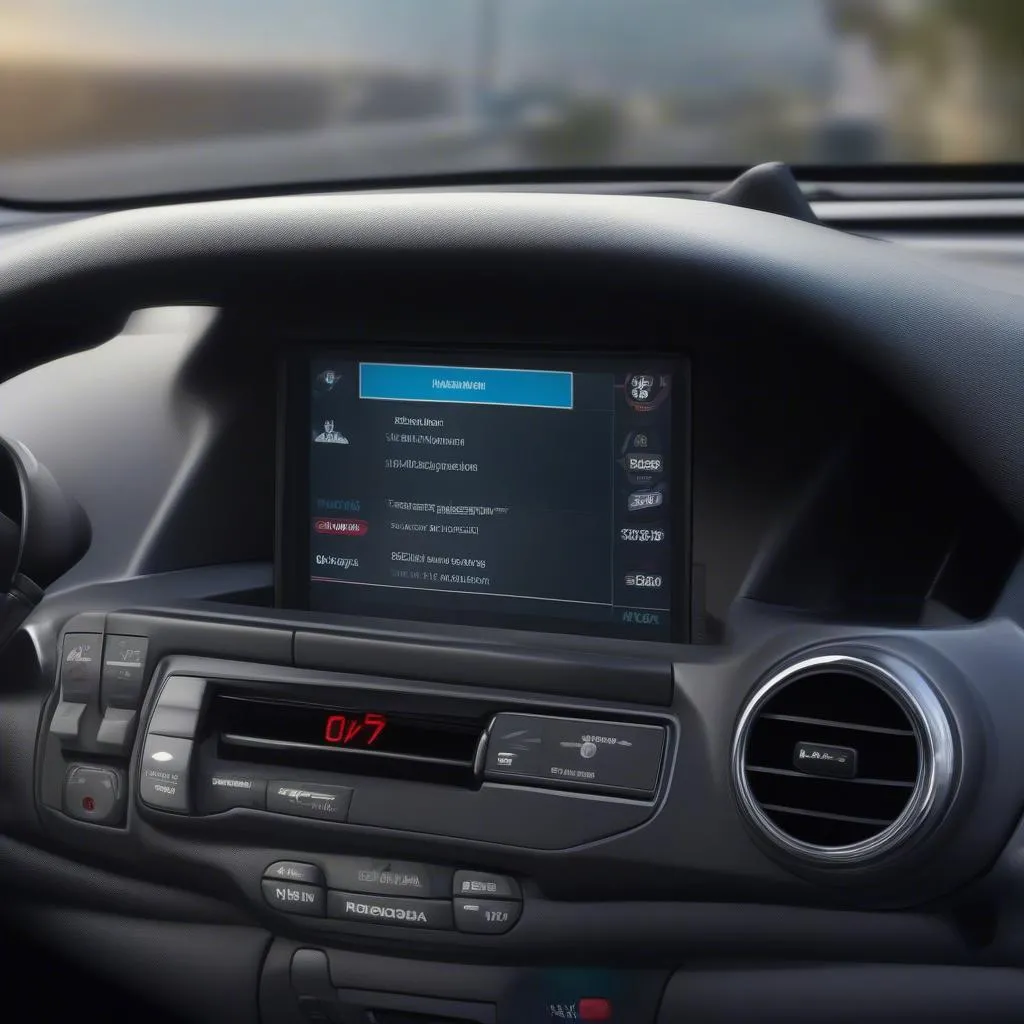Experiencing issues with your Chrysler 300 battery? You’re not alone. Battery problems are a common complaint among Chrysler 300 owners, but the good news is that many of these issues can be easily diagnosed and resolved. This comprehensive guide will walk you through the most common Chrysler 300 battery problems, their potential causes, and how to troubleshoot them effectively.
Common Chrysler 300 Battery Problems
Several symptoms might indicate a problem with your Chrysler 300 battery. These include:
- Slow Engine Crank: If your engine is slow to turn over when you start your car, it could be a sign of a weak battery.
- Clicking Sound When Starting: A rapid clicking noise when you turn the key could indicate a dead battery or a problem with the starter motor, often linked to a faulty battery connection.
- Dim Headlights and Interior Lights: A failing battery may struggle to provide enough power to your car’s electrical components, resulting in dim lights.
- Warning Lights on Dashboard: The battery light or check engine light might illuminate on your dashboard if there’s an issue with the charging system or the battery itself.
- Swelling or Leaking Battery Case: Physical damage to the battery, like swelling or leaks, is a serious concern and requires immediate attention.
Potential Causes of Chrysler 300 Battery Problems
Understanding the potential causes of your Chrysler 300 battery problems is crucial for effective troubleshooting. Here are some of the most common culprits:
- Old Age: Car batteries have a limited lifespan, typically between 3 to 5 years. As your battery ages, its ability to hold a charge diminishes.
- Extreme Temperatures: Both extreme heat and cold can negatively impact battery performance and lifespan.
- Parasitic Drain: Even when your car is off, certain electrical components can draw a small amount of power from the battery, potentially draining it over time if there’s a fault.
- Faulty Alternator: The alternator is responsible for recharging the battery while driving. If it fails, your battery won’t receive the charge it needs.
- Loose or Corroded Battery Terminals: Poor connections at the battery terminals can disrupt the flow of electricity and lead to starting problems.
Troubleshooting Chrysler 300 Battery Problems
Before you jump into troubleshooting, ensure your safety by wearing appropriate protective gear and working in a well-ventilated area. Here’s a step-by-step guide to help you diagnose and address common battery issues:
-
Check Battery Terminals: Inspect the battery terminals for any signs of corrosion or looseness.
- If you find corrosion, clean the terminals and battery posts with a baking soda and water solution using a wire brush.
- Ensure the terminals are tightly secured to the battery posts.
-
Test Battery Voltage: Use a multimeter to check the battery’s voltage.
- A fully charged battery should read around 12.6 volts.
- A reading below 12.4 volts could indicate a weak or discharged battery.
-
Jump-Start Your Car: If the battery is dead, attempt to jump-start your Chrysler 300 using jumper cables and a working battery from another vehicle.
- Remember to follow the correct jump-starting procedure to avoid any damage.
-
Test the Alternator: With the engine running, use the multimeter to check the voltage across the battery terminals.
- A reading between 13.5 and 14.5 volts indicates a properly functioning alternator.
- If the reading is outside this range, your alternator might be faulty and need replacement.
-
Check for Parasitic Drain: If you suspect a parasitic drain, disconnect the negative battery cable and connect the multimeter in series between the disconnected cable and the battery’s negative terminal.
- A reading above 50 milliamps could indicate a parasitic drain. Consult a qualified mechanic to identify and resolve the source of the drain.
Expert Insights
“Many car owners underestimate the importance of regular battery maintenance,” says John Smith, a certified automotive electrician with over 15 years of experience. “Simple steps like cleaning the battery terminals and ensuring they are tightly secured can significantly extend the life of your battery and prevent unexpected breakdowns.”
Conclusion
Addressing Chrysler 300 battery problems often involves a combination of basic troubleshooting and knowing when to seek professional help. By understanding the common symptoms, potential causes, and troubleshooting steps outlined in this guide, you can keep your Chrysler 300 running smoothly and avoid unexpected battery-related issues. Remember, a well-maintained battery is essential for the reliable operation of your vehicle.


